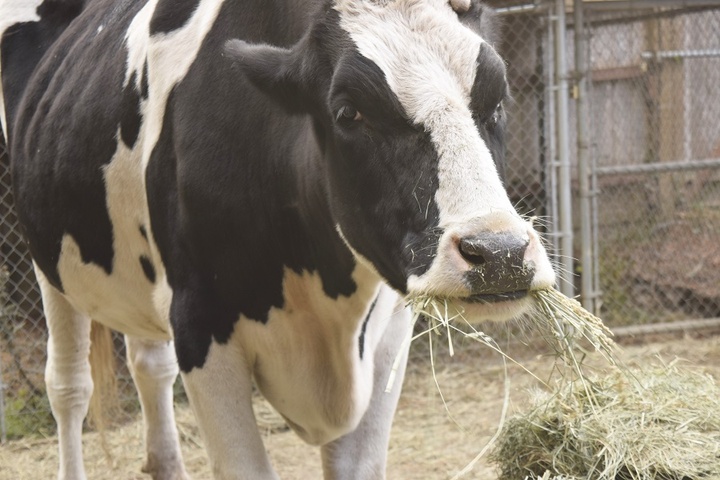
Danniel. Photos provided by Lilach Assayag.
On a cold September day in Eureka, Sequoia Park Zookeeper Lucinda Smith unlatches the gate of a nearby exhibit and wheels in a trough overflowing with 20 pounds of straw.
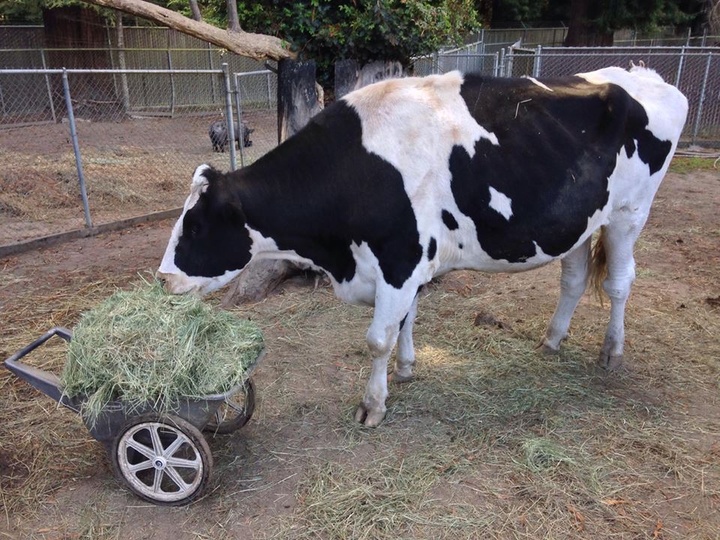
Danniel, the 6-foot 4-inch, 2,000-pound dairy cow, who’s called the zoo home for the last few moths, eagerly swishes his tails as he awaits his evening feed.
The heap of hay would be a day’s worth of food for the yaks that previously occupied the exhibit, but Danniel is no ordinary steer. The behemoth bovine is believed to be the tallest living cow in the world, and paperwork is currently being processed with Guinness World Records to prove as much.
“It cost about $10 a day to feed him,” Smith said. “It’s a lot for our budget, but his poo is what’s really killing us.”
On an average day, Danniel eats 45 pounds of hay and can unload up to 150 pounds of manure.
“That’s a lot of zoo doo,” Smith laughed.
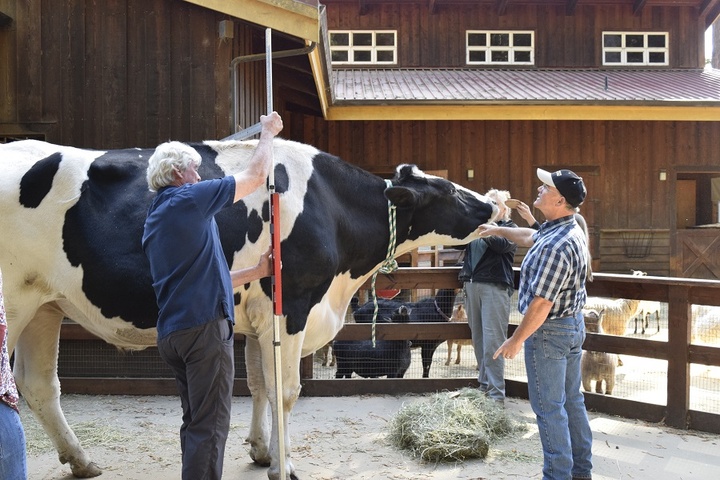
In this photo of his measuring you can see the Zoo vet, Dr. Silver holding the measuring tool, in the fore front is Ken Farley, Danniel’s owner and behind him are Amanda Auston, Animal Curator and Zookeeper Lucinda Smith.
Due to the strain the immense holstein is putting on the zoo’s budget and its staff, Danniel’s owners, Ken and Ann Farley of Ferndale, are actively working to find Danniel a more permanent home.
Before arriving at the zoo, Danniel began his growth spurt at a pasture in Bayside. But when he began busting up fences and running loose on a regular basis, the Farleys realized their abnormally large steer had outgrown his pen.
“It was all accidental — he’s just a big pet,” Ken Farley said. “There was a neighborhood backed up to the pasture there where he might see a fruit tree or something he wanted to eat, so he would start leaning on the fence and soon enough, the fence bends over, he steps over it and we get phone calls.”
That’s when Farley contacted Sequoia Park Zoo Manager Gretchen Ziegler.
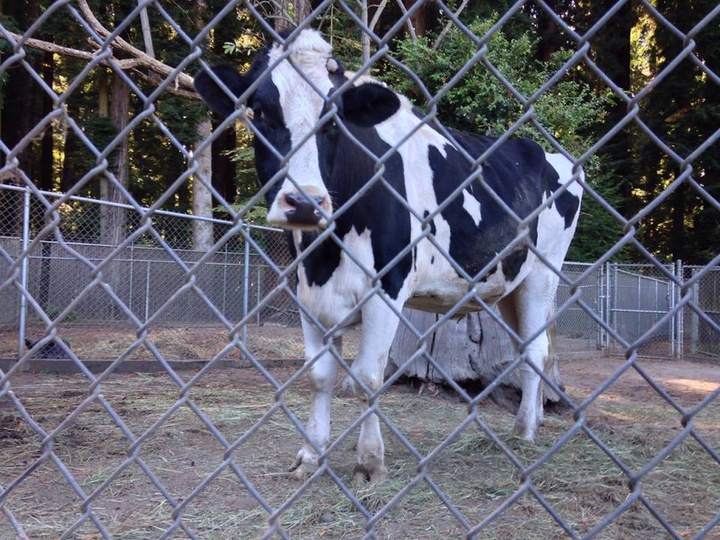
Danniel in his zoo enclosure.
“We said we’d give [housing Danniel] a try, but we were pretty sure we didn’t have the pasture size for him either,” Ziegler said. “Our fences are fine, but once it starts to rain, we just don’t have the space or the grass capacity to feed a big guy like that.”
Because of Danniel’s size, zoo employees say his hooves churn up the ground, making it impossible to grow fodder in his exhibit. To make matters worse, the six-and-a-half-year-old steer could seriously injure himself during the rainy months, when the churned dirt turns to mud.
As a result, the Farleys have been shopping Danniel around to interested caretakers.
“There’s a couple of sanctuaries that are really interested, as well as private landowners,” Farley said. “But what we want, is for kids to be able see him. And the thing with private landowners is, they’re just going to put him out to pasture, so they’re out.”
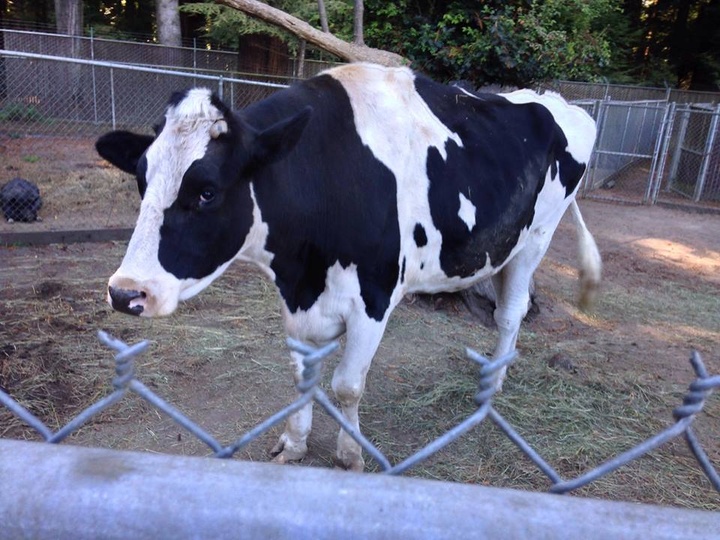
A variety of local and out-of-state businesses have also shown interest in Danniel, including a a Texas freak show. But Farley said the best home for Danniel may be right here in Humboldt County.
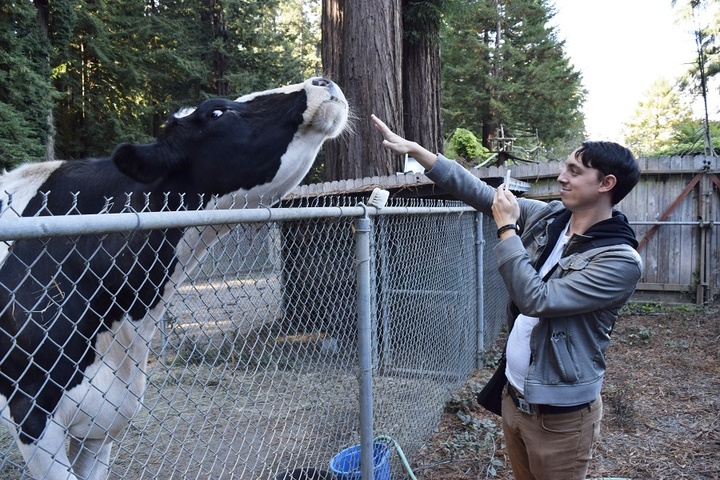
Reporter John Ross Ferrara’s hand is licked by what may be the world’s largest bovine.
“My wife and I are narrowing it down to Lost Coast Hay. They’re good local people and they’re at the top of the list,” Farley said. “But we also love him being at the zoo. They’re taking great care of him, he’s put on weight, looks great and he loves people.”
Farley said that wherever Danniel goes, he will be on permanent loan like a work of art. That way, the new caretakers can keep him, but can’t sell him off to anyone else.
“If he could go out to Lost Coast Hay for nine months of the year, and then go to the zoo in the summer months, that would be ideal,” Farley said. “He’s easy to trailer, he loads up with a loaf of bread no problem.”
Lost Coast Hay Manager Tom Parker tole the Outpost that the Eureka business wants to fence off a one-acre pasture on its property and make Danniel the official Lost Coast Hay mascot.
“We plan to fence off the pasture and spoil him rotten,” Parker said.
Although zookeeper Lucinda Smith said 3 to 5 acres is a more ideal space for the steer, Parker said the business also has access to an 81-acre ranch in Kneeland where Danniel can roam free during the rainy season.
“When it’s really nasty, we’ll move him to higher grounds so he won’t have to stay in a stall here,” Parker said. “The rest of the year, people can stop by and see him any time they want, feed him some grain, take pictures and pat him on the head.”
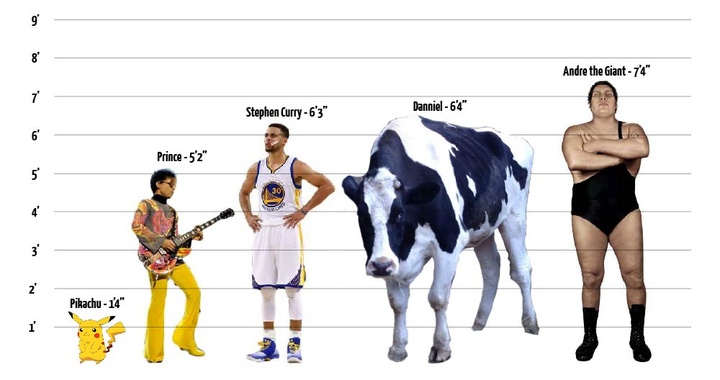
Christian Testanier.
CLICK TO MANAGE